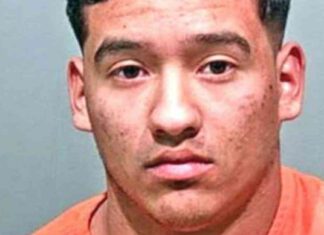(Washington) When Hurricane Sally hit Florida in 2020, American pilot Dean Legidakes was aboard a scientific plane dedicated to observing these storms, and he was flying right in the middle of it.
Once back on land, his mother calls him: “our house was destroyed by the storm,” she tells him.
For this “hurricane chaser” employed by the American government, helping to better predict the path of these sometimes destructive weather events is therefore a very personal cause.
“Satellites can’t do what we do,” go “into the heart of the storm,” emphasizes this father of three young children from Pensacola, Florida.
Every year, two “P-3” planes from the American Oceanic and Atmospheric Observation Agency (NOAA) crisscross the Atlantic to refine meteorologists’ predictions live on the paths and intensity of threatening hurricanes.
These devices will be more essential than ever this year, as the hurricane season – from the beginning of June to the end of November in the United States – promises to be “extraordinary” according to forecasts, with up to seven Category 3 or higher hurricanes in the North Atlantic.
While most aviators avoid turbulence as much as possible, NOAA pilots head straight into it.
Dean Legidakes, formerly of the US Navy now on the administration side at NOAA, confides that he was sometimes “nervous” in this “very dangerous environment”.
His colleague Kevin Doremus counts around 140 passages through the eye of a hurricane in six years.
“It’s like a roller coaster at a car wash,” he compares, referring to downpours. “When you get to the top, your stomach rises a little, and at the bottom, you sink into your seat. It’s a lot of that, but sometimes for eight hours.”
The “ascending and descending” winds are the most difficult to face, he tells AFP in front of the cockpit covered with switches. “Quite often you have to go with the flow, not struggle, otherwise you risk damaging the plane. »
In the military-style cabin, the seats are equipped with vomit bags and multiple screens scrolling through the data collected, notably by the various radars on the plane.
Each mission lasts between eight to ten hours and involves around ten people: pilots, mechanics, flight director, scientists, etc.
There are even bunks, although “taking a nap in a hurricane is difficult,” admits Kevin Doremus, 36.
Sometimes, in the eye of the hurricane where the winds are calm, “we go around in circles and everyone thinks we’re conducting scientific experiments, but we just let everyone get up to go to the bathroom,” laughs -he.
The two planes, nicknamed “Kermit” and “Miss Piggy” after famous puppets, fly at an altitude of about 3 km. In service since the 1970s, none have suffered a serious accident.
On their sides, dozens of stickers bear the names of the hurricanes they encountered. Each driver keeps one in memory that particularly marked him.
For Kevin Doremus, it was Dorian, who devastated the Bahamas in 2019 by landing in category 5, the highest.
“Given the conditions we were flying in, I can’t imagine what it must have been like on the ground,” he says. “It was quite a chilling experience to look down and see there were houses. »
For Michael Brennan, director of the National Hurricane Center (NHC), “there is no doubt that the data collected by these planes directly contributes to saving lives and reducing economic impact. »
“They improve forecasting models by 10 to 20%,” he explains to AFP. However, the precision gained is sometimes what decides or not on an evacuation order, allowing for example to “keep ports open”. Each threatening storm is usually tracked over several days.
But “we definitely saw an increase in the number of rapidly intensifying storms,” says Kevin Doremus. An effect linked to climate change, according to scientists.
To dissect the storm, several dozen catasondes – large cylinders equipped with parachutes – are launched by flight, via a tube in the floor of the plane.
As they fall, they collect data on pressure, humidity, temperature and winds.
“Kermit” and “Miss Piggy” will retire in 2030, by which time NOAA hopes to have two operational replacements.
Their drivers will continue to provoke two opposing reactions when talking about their job, according to Dean Legidakes. Either “‘You’re an idiot to do this, you must be crazy!’ Or ‘This is really cool.'”





